The words “borrow” and “lend” are often used interchangeably, but they have distinct meanings that are essential to understand in both everyday communication and financial contexts. Let’s dive into the nuances of these terms.
Continue reading

The words “borrow” and “lend” are often used interchangeably, but they have distinct meanings that are essential to understand in both everyday communication and financial contexts. Let’s dive into the nuances of these terms.
Continue reading
This article explores how refining your keyword strategy by focusing on niche, long-tail, and geo-targeted keywords can improve Clickthrough Rates (CTR) in competitive online environments. It provides practical examples and actionable steps to help advertisers enhance their ad performance by targeting more specific audience segments, reducing competition, and aligning ad content with user intent.
Continue reading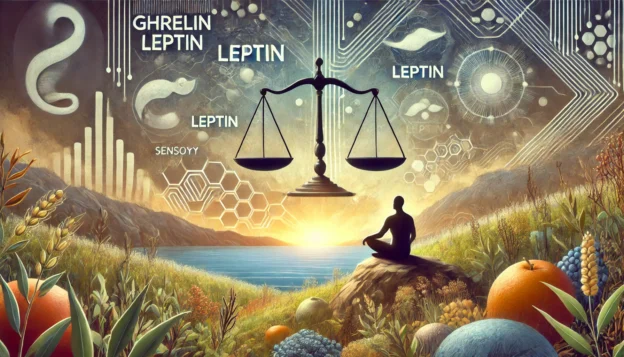
Addressing weight loss challenges for those with Asperger syndrome requires more than just diet and exercise; it demands an appreciation of their unique needs and compassionate, individualized care. Understanding ghrelin and leptin is crucial, as individuals with Asperger syndrome often struggle with hunger cues. This article provides practical strategies like structured routines, mindful eating, and sensory-friendly foods, highlighting the importance of tailored support for effective weight management.
Continue reading
This article provides a clear explanation of Clickthrough Rate (CTR) and its importance in digital marketing. It uses real keyword performance data to demonstrate how CTR can reveal the effectiveness of different keywords, offering practical insights and recommendations for optimizing ad campaigns. Whether you’re looking to refine your targeting or improve ad content, this analysis will help you understand how to engage your audience better.
Continue reading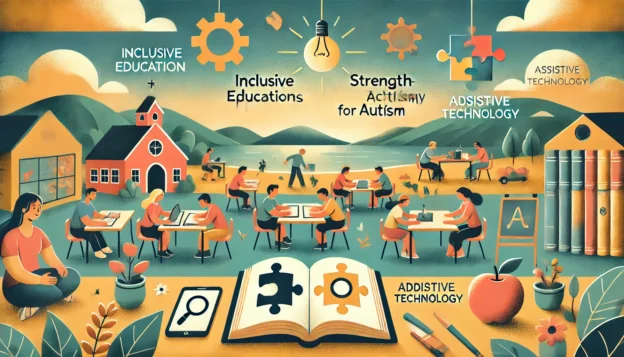
This article explores key educational concepts for supporting autistic students, including inclusive education, strength-based approaches, and assistive technology. Inclusive education integrates all students into mainstream classrooms, promoting diversity and equal opportunities, as highlighted by the Salamanca Statement in 1994 (MDPI, 2023). Strength-based approaches focus on leveraging students’ strengths and interests to enhance learning and engagement (Education Hub, 2023). Assistive technology provides tools like text-to-speech and robotics to support individualized learning needs (SpringerLink, 2021; Emerald Insight, 2021). The article discusses how these methods intersect to create comprehensive educational strategies while noting potential divergences. The author advocates for combining these approaches to create supportive and effective learning environments for all students.
Continue reading
This article explores key concepts in autism advocacy and acceptance, including neurodiversity, autism acceptance versus awareness, intersectionality, gender differences, late diagnosis, autistic pride, self-advocacy, and parent-led versus autistic-led advocacy. It provides historical context and describes each term, highlighting how they align or differ. Neurodiversity and autistic pride emphasize acceptance and empowerment, while intersectionality and gender differences call for nuanced approaches. Late diagnosis underscores the need for awareness and timely support. The article concludes by stressing the importance of embracing these diverse perspectives to foster a supportive environment for autistic individuals.
Continue reading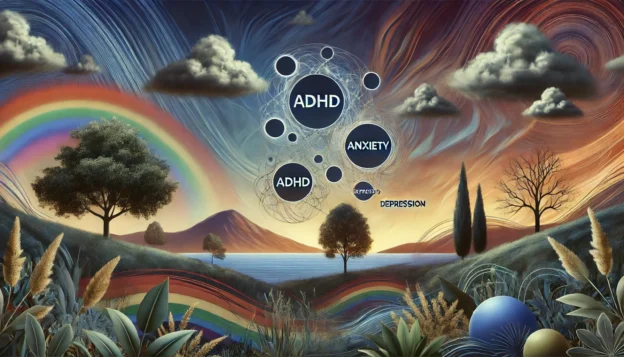
This article explores the comorbid conditions often seen in individuals with autism spectrum disorder (ASD), focusing on ADHD, anxiety, and depression. ADHD co-occurs with autism in 30-61% of cases, sharing traits like inattention and hyperactivity, though treatment strategies differ. Anxiety, affecting up to 84% of autistic individuals, includes generalized anxiety and OCD, complicating diagnosis due to overlapping symptoms. Depression, affecting 26% of autistic individuals, arises from social isolation and chronic stress, presenting with symptoms like low mood and sleep disturbances. The article emphasizes the importance of a comprehensive approach to treatment, addressing both autism and its comorbid conditions for improved quality of life.
Continue reading
This article examines Social Communication Disorder (SCD) and Autistic Burnout within the context of autism spectrum disorder (ASD). SCD, introduced in the DSM-5 in 2013, involves persistent difficulties in verbal and nonverbal social communication, distinct from autism as it lacks restricted and repetitive behaviours. Autistic burnout, characterized by chronic exhaustion and loss of skills due to prolonged stress and masking of autistic traits, highlights the impact of environmental pressures on autistic individuals. The article explores the intersection and divergence between SCD and autistic burnout, emphasizing the need for differentiated and supportive interventions to improve the quality of life for autistic individuals.
Continue reading
This article explores Executive Functioning Deficits and Sensory Processing Issues in autism, providing historical context and detailed descriptions of each concept. Executive Functioning (EF) deficits involve challenges with cognitive processes such as working memory, cognitive flexibility, and inhibitory control, affecting planning and problem-solving. Sensory Processing Issues include atypical responses to sensory stimuli, leading to hyperreactivity or hyporeactivity. The article highlights the complex interplay between these two aspects, noting that sensory overload can impair EF, and integrated support strategies can improve quality of life for autistic individuals. It advocates for individualized interventions that address both EF and sensory challenges to foster a more supportive environment.
Continue reading
This article explores six behavioural and psychological concepts related to autism: echolalia, stimming, hyperfocus, special interests, autistic masking, and alexithymia. Echolalia involves repeating words or phrases, serving as communication or self-regulation. Stimming, or self-stimulatory behaviour, helps manage sensory input and emotions. Hyperfocus allows deep concentration on tasks, often linked to special interests, which provide joy and expertise but can dominate time. Autistic masking involves suppressing natural behaviours to fit in, leading to stress and burnout. Alexithymia is the difficulty in identifying and describing emotions, affecting interpersonal relationships. These concepts are interconnected, highlighting the unique experiences of autistic individuals. The article advocates for understanding and accepting these behaviours as intrinsic to the autistic experience.
Continue reading
The article explores various cognitive and empathy theories related to autism, such as Theory of Mind (ToM), mind-blindness, and the double empathy problem. It delves into the distinctions between cognitive and affective empathy, and measures like the Empathy Quotient (EQ) and Systemising Quotient (SQ). The empathising-systemising (E-S) theory and the extreme male brain (EMB) theory are also discussed. The article emphasizes that while traditional theories like mind-blindness suggest deficits in autistic individuals, newer concepts like the double empathy problem highlight mutual communication challenges between autistic and non-autistic people. It argues for a more inclusive understanding of autism, recognizing diverse cognitive profiles and empathy experiences.
Continue readingHerwig Czech’s detailed investigation into Hans Asperger’s controversial involvement with the Nazi regime provides crucial insights into the historical context and ethical complexities surrounding Asperger’s work. By revealing Asperger’s participation in the Nazi euthanasia program, this research challenges previous notions of his role as a protector of autistic children and raises important questions about his legacy in autism research. This article invites readers to delve into the nuanced history and consider its implications for contemporary autism spectrum disorder classifications and support systems.
Continue reading
The DSM-5’s consolidation of Asperger’s Syndrome with other autism spectrum disorders into a single category of Autism Spectrum Disorder (ASD) has been highly controversial. Critics argue this change overlooks important distinctions and specific needs of individuals with Asperger’s Syndrome. Dr. Lorna Wing, a prominent British psychiatrist, and several contemporary researchers, including Dr. Catherine Lord, James McPartland, and Fred Volkmar, have raised concerns. They emphasize that the unique cognitive, social, and behavioural profiles of those with Asperger’s warrant separate classifications to ensure appropriate support and interventions. Organizations like Autism Speaks also highlight potential difficulties in service access under the broader ASD category. This debate underscores the necessity for ongoing refinement and discussion in the field of developmental disorders.
Continue reading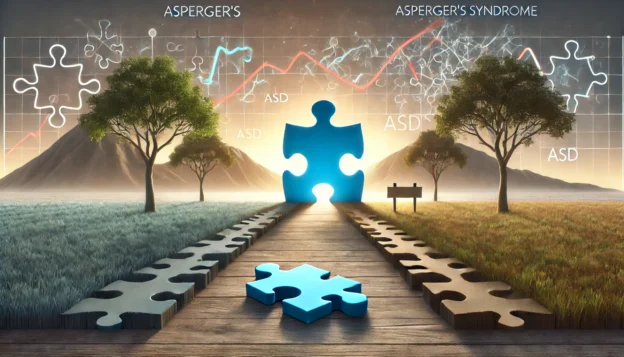
Asperger’s Syndrome, described by Dr. Hans Asperger in 1944, is characterized by normal to high intelligence and strong language skills but significant social challenges. The DSM-IV recognized it as distinct from other autism spectrum disorders. However, the DSM-5 in 2013 merged Asperger’s into Autism Spectrum Disorder (ASD), citing shared characteristics. Critics argue this overlooks unique cognitive profiles, language development, and social interaction patterns specific to Asperger’s, necessitating tailored educational and behavioural interventions. Maintaining Asperger’s as a separate classification ensures individuals receive appropriate, specialized support, improving their outcomes.
Continue reading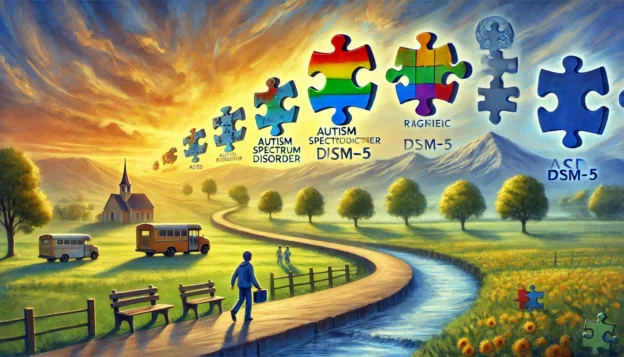
Autism Spectrum Disorder (ASD) has undergone significant reclassification over time. Historically, it was divided into subtypes including Infantile Autism, Asperger’s Syndrome, Pervasive Developmental Disorder-Not Otherwise Specified (PDD-NOS), Childhood Disintegrative Disorder (CDD), and Rett Syndrome. These subtypes were recognized based on varying social, communicative, and behavioural challenges. In 2013, the DSM-5 unified these categories under a single diagnosis of ASD, reflecting a spectrum of symptoms with varying severity. This modern classification emphasizes persistent social communication deficits and restricted, repetitive behaviours, with levels indicating the required support. This shift enhances diagnostic consistency and personalized support for individuals with autism.
Continue reading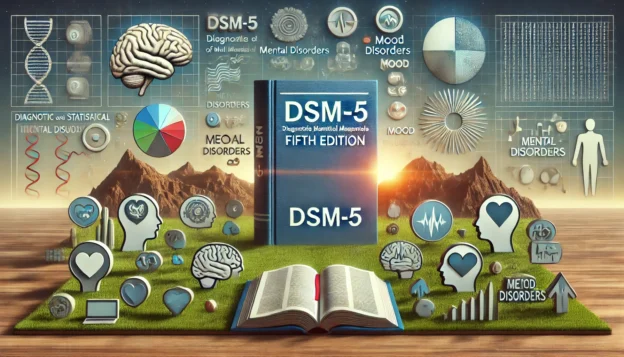
The DSM-5, published by the American Psychiatric Association in 2013, is an essential tool for diagnosing mental disorders, reflecting decades of evolving research since its first edition in 1952. The manual is divided into three sections: an introduction, detailed diagnostic criteria across 20 chapters, and emerging measures and models. Despite its utility, the DSM-5 has faced criticism for reducing diagnostic categories, medicalizing normal behaviours, potential pharmaceutical influence, and a lack of transparency in its revision process. Used globally, often alongside the WHO’s ICD, the DSM-5 remains a crucial yet controversial framework in mental health diagnostics.
Continue reading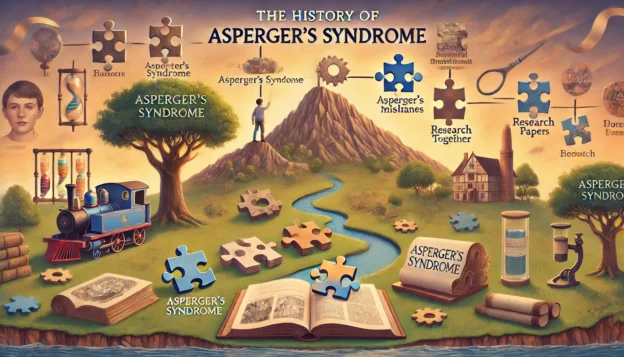
Asperger’s Syndrome, first identified by Dr. Hans Asperger in 1944, describes individuals with normal intelligence and language development but significant social and communication challenges. British psychiatrist Dr. Lorna Wing brought Asperger’s work to global attention in the 1980s, emphasizing the unique profiles within the autism spectrum. Asperger’s Syndrome was officially recognized in diagnostic manuals in the 1990s but was merged into Autism Spectrum Disorder (ASD) in the DSM-5 in 2013. This consolidation has been controversial, with critics arguing it overlooks the specific needs of those with Asperger’s. Despite this, the legacy of Asperger and Wing continues to influence the understanding and support of autism spectrum conditions.
Continue reading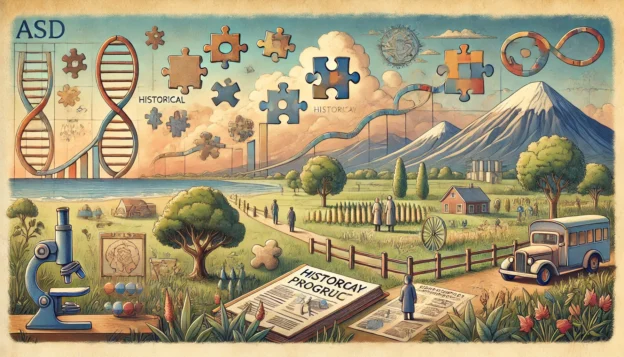
Autism Spectrum Disorder (ASD) is a complex developmental condition characterized by social, communication, and behavioural challenges. Initially identified in the early 20th century, ASD was distinctively described by Dr. Leo Kanner in 1943 and Dr. Hans Asperger in 1944. The understanding and diagnostic criteria of autism evolved over time, with the DSM-5 in 2013 consolidating various subtypes under the single diagnosis of ASD, emphasizing a spectrum of symptoms. Advances in genetic and neurological research have deepened understanding, while advocacy and support organizations have promoted awareness and acceptance. The neurodiversity movement and self-advocacy efforts highlight the strengths of individuals with autism, fostering greater societal acceptance and inclusion.
Continue reading
The promise of cloud computing’s flexibility, scalability, and cost-efficiency is often undermined by the widespread issue of overprovisioning. A study by CAST AI highlights that a significant portion of provisioned resources in Kubernetes clusters remain unused, leading to substantial waste. My experience aligns with these findings, showing that poorly controlled cloud sprawl is a common problem. While CAST AI and other providers offer solutions for optimization, cloud providers themselves are beginning to offer similar tools, despite it being in their financial interest to encourage overprovisioning. Effective cloud resource management requires a shift from cautious overprovisioning to proactive optimization to truly realize the benefits of cloud computing.
Continue reading
In “Words Matter: The Power of Russell Conjugation in Media and Politics,” the article explores Russell Conjugation, a linguistic technique identified by philosopher Bertrand Russell, illustrating how different word choices with similar meanings can evoke varying emotional responses. The concept highlights the power of language in shaping perceptions, particularly in media and politics, where strategic wording can influence public opinion and behavior. The article delves into the historical background of Russell Conjugation, its mechanics, and its significant impact on media narratives and political discourse, emphasizing the ethical implications of using language to manipulate or mislead. Additionally, it underscores the importance of being mindful communicators and discerning consumers of information in an age dominated by information overload.
Continue reading